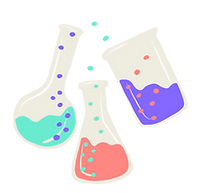Creating Custom Science Experiences for Every Learner
- nerds7

- Jun 11
- 4 min read
Science can sometimes feel like a daunting subject. Terms can be complex, experiments can be unpredictable, and the vastness of scientific knowledge can leave students feeling overwhelmed. However, the beauty of science lies in its inherent ability to be customized to fit the unique learning styles and interests of every student. Crafting custom science experiences ensures that each learner engages dynamically with the subject matter, leading to lasting comprehension and enthusiasm.
Understanding Custom Science Approaches
Custom science education refers to the tailoring of scientific concepts and activities to meet individual learners' needs. This method acknowledges that students learn differently; some are visual learners, others are auditory, and some may require hands-on experience to grasp concepts fully.
According to a report by the National Science Teachers Association, students are 90% more likely to engage in science when they can connect lessons to their interests and real-world applications. This statistic highlights the importance of personalizing science education for maximum impact.
Benefits of Personalized Science Experiences
Increased Engagement
When students get to choose what they study, or how they learn about a topic, they become more invested. Custom science experiences entice curiosity and encourage learners to explore concepts further.
Diverse Learning Modalities
Not every student processes information the same way. A custom approach allows educators to cater to various learning styles, whether through visual data, interactive experiments, or auditory explanations.
Fostering Critical Thinking
Personalized science experiences don’t just help students understand the material; they also teach critical thinking and problem-solving skills. When students engage with challenging content that they are interested in, they develop these essential skills organically.

Techniques for Creating Customized Science Experiences
1. Interest Surveys
At the beginning of a unit, begin with interest surveys to gauge what students are excited about in science. Ask questions like:
What scientific topics fascinate you?
Have you conducted any experiments at home? What were they?
What careers in science do you find intriguing?
Using this data, educators can craft lessons that relate to students' interests, making the subject matter accessible and exciting.
2. Project-Based Learning
Project-based learning (PBL) is highly effective in science education. Students work on a project over an extended period, which promotes better understanding through hands-on experience.
For instance, if students express an interest in environmental science, guide them to create an ecosystem in a terrarium or monitor pollution levels in their local water source. This type of learning solidifies concepts by applying them in real-world contexts, ensuring that students are not just passive learners but active participants in their education.

3. Use of Technology
Technology plays a significant role in customizing the science learning experience. Here are some ways to incorporate technology effectively:
Interactive Simulations: Websites like PhET provide simulations for everything from physics to biology. Students can manipulate variables and see real-time results, allowing for deeper understanding.
Digital Collaboration Tools: Use platforms like Google Classroom, where students can collaborate on projects, share resources, and discuss topics of interest.
Online Research Tools: Equip students with the skills to conduct meaningful research, allowing them to follow up on topics that spark their curiosity.
Utilizing diverse technology makes science more interactive and engaging for students, breaking the traditional lecture style that often leads to disengagement.
4. Flexible Classroom Environments
To accommodate different learning styles, flexible classroom setups can significantly enhance science education. For instance:
Collaboration Zones: Designate areas for group work where students can collaborate on experiments or brainstorming sessions.
Quiet Zones: Allow for personal study areas where students can read or research independently.
Hands-On Stations: Equip the classroom with science stations where students can rotate and conduct experiments at their own pace.
These adaptable environments encourage student initiative and ownership of their learning, making science not just an obligation, but an exploration.
Collaborating with Parents and Communities
To take custom science experiences up a notch, engaging parents and the broader community is crucial. Here are ways to foster collaboration:
Workshops: Organize workshops where parents can engage in science activities with their children, reinforcing learning at home and giving students a chance to showcase their knowledge.
Community Challenges: Create challenges that involve local issues, such as recycling drives or community clean-up days that require scientific planning and assessment.
Guest Speakers: Invite professionals from various scientific fields to speak with students about their work, helping to build connections between classroom lessons and real-world applications.
Such collaborations form a bridge between school and home, allowing students to see science in action outside the traditional classroom setting.

Continuous Assessment and Feedback
Customized learning experiences should also include ongoing assessments tailored to individual growth paths. Traditional tests may not always be the best gauge of understanding. Instead, employ formative assessments that encourage reflection and discussion.
Self-Assessments: Encourage students to evaluate their understanding and research skills.
Peer Assessments: Facilitate feedback sessions where students can learn from each other’s perspectives and insights.
Project Reflections: After project completion, have students present their findings and reflect on their process and learning journey.
This personalized assessment approach fosters an environment where students feel safe to express uncertainty and explore ideas further, creating a positive feedback loop that enhances learning.
Final Thoughts on Custom Science Learning
Creating custom science experiences for every learner is an evolving process. Through interest surveys, hands-on project-based learning, the integration of technology, and collaboration with parents and the community, educators can build an inclusive environment that celebrates diverse learning styles.
As we navigate the complexities of science education, it's crucial that we remember the most impactful experiences stem from engaging, personalized lessons. For further resources and tools on enhancing science education, consider exploring sites like thesciencenerds berlin. By embracing personalized approaches that cater to the unique needs of each student, we can ignite a passion for science that lasts a lifetime.

.png)





Comments